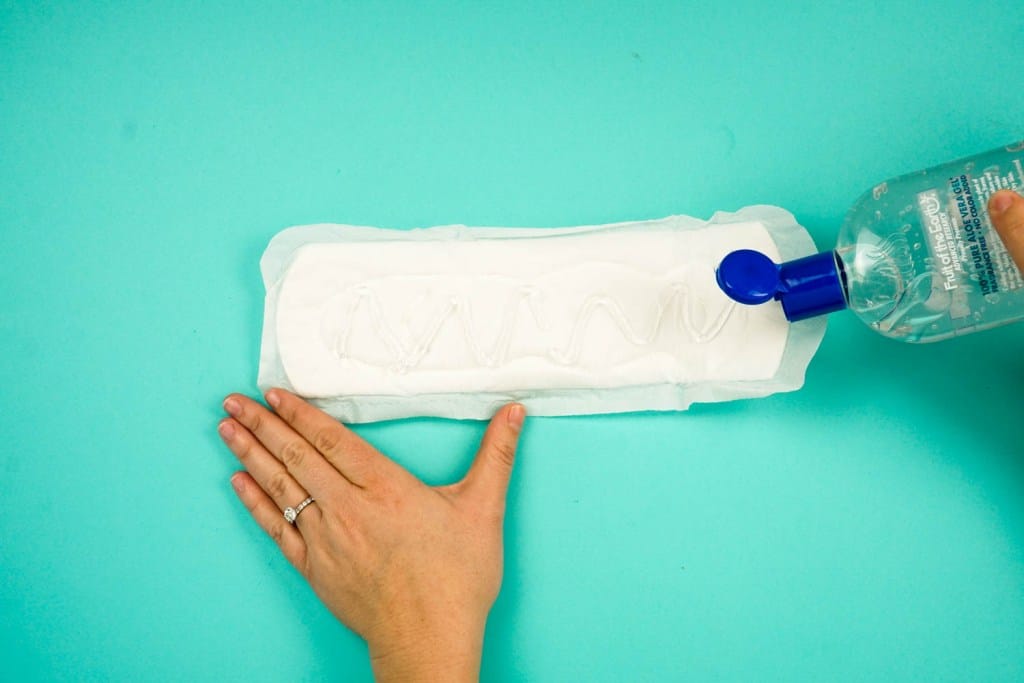
Table of Contents
As your due date nears, you must be focusing a lot on preparing for the birth of your little bundle of joy. From packing your hospital bag to nesting for your little one, stocking up diapers, so that your little one has everything he or she needs to enter this world.
The excitement of holding your new one in your arms soon is so much that you might forget that there are things you need to tick off on your postpartum healing checklist as well, such as how to make padsicles at home for after birth, getting postpartum recovery belt and heating pads for your breasts. Vaginal bruising, swelling, and stitches from vaginal tearing are common during childbirth. It’s true that the pain eventually fades away, but when you’re at the moment, you wish you could just snap your fingers to take the pain away.
Some women choose to sit on a pillow or ice pack, whereas on the other hand, some get a little creative and use a padsicle or a chilled pad or napkin, for relief.
What Is A Padsicle ?
It might be quite a new word for many, but padsicles can be your best friend when it comes to post-partum care. As the name suggests, it is short for pad (what it’s made of) and popsicle (because it is chilled). A padsicle is just a sanitary napkin that is chilled in the freezer and placed inside your underwear. It helps to relieve pain encourages healing after a normal delivery and is considered a lifesaver after childbirth.
Many women make a bunch of padsicles during their third trimester, as they are nesting. But it’s totally up to you when you prepare for your postpartum care kit.
Why Use Padsicles Instead Of Perineum Ice packs ?
The perineum ice packs they give you at the hospital are great. But they can get a little uncomfortable. But once you’ve wrestled with the perineum ice pack and absorbent pads, a padsicle becomes worth its weight and formula.
Want another reason to try out padsicles? Natural ingredients. Aloe vera, witch hazel, and lavender oil have anti-inflammatory properties which soothe your skin and reduce swelling.
What Are The Benefits Of Using Padsicles ?
Using padsicles for your postpartum recovery has many benefits, such as:
– Ease the pain
– Reduce swelling of the labia
– Vaginal bruising
– Vaginal stitches
Postpartum vaginal pain can also be eased by sitting on an ice pack. But once you learn how to make padsicles for after birth, you’ll have a lot of benefits as they’re covered with natural ingredients with healing preoprties. Also, it helps you feel better sooner and soothes your pain compared to sitting on an ice pack.
DIY Padsicles: Ingredients
1. Aloe Vera
Aloe vera has cooling and soothing properties. This can help relieve inflammation and acute pain as well. Organic aloe vera, without chemicals and additives, are known to have anti-inflammatory and analgesic properties as well.
2. Witch Hazel
As an anti-inflammatory, witch hazel can reduce swelling, pain, and bruising, reduces skin irritations, plus relieves itching and inflammation associated with hemorrhoids.
3. Lavender Essential Oil
Lavender oil also has anti-inflammatory properties, as well as relieves soreness, and heals wounds. Lavender oil has a calming effect and helps to relieve anxiety and stress.
All these natural ingredients make padsicles a better choice for postpartum care. This product isn’t available in stores and is thus a DIY project that takes less than 15 minutes. So, here’s how to make padsicles at home?
DIY Padsicles: How To Make Padsicles
Now that we’ve known the benefits of using a padsicle, here’s a step-by-step process on how to make padsicles at home on your own.
Supplies
1. Sanitary pads or maxi pads
2. Witch hazel (alcohol-free)
3. Organic aloe vera gel
4. A small spray bottle
5. Lavender essential oil or any essential oil of your choice (optional)
7. Storage bag for freezer
Step-By-Step Instructions On How To Make Padsicles At Home
Step 1: Unfold The Maxi Pad
Unwrap each maxi pad or sanitary napkin and keep them open on a clean and flat surface. Do not remove the adhesive tabs.
Step 2: Add The Aloe Vera Gel
Squeeze unscented organic aloe vera gel generously and spread it all over the pad from front to back and again to the front. Also, make sure the aloe vera gel you’re using is free from additives and chemicals.
Step 3: Add The Witch Hazel And Essential Oils
Fill the spray bottle with witch hazel. To this, you can add 2-3 drops of lavender oil or any essential oil of choice. Adding essential oil is optional.
Step 4: Pack And Store The Padsicles
Refold the pad in its original wrapper and put it inside a freezer bag. You can also wrap it individually with plastic wrap or parchment paper.
Step 5: Freeze Your Padsicles
Store them in your freezer and use them as needed during the first few days after giving birth.
DIY Padsicles: How To Use
You now know how to make padsicles and are ready to use them. They’re mostly used for 2 to 3 days after you’ve given birth.
- Take one out of your freezer.
- Thaw it for a couple of minutes.
- A padsicle is nothing more than a sanitary napkin, so you can wear it inside your underwear like you’d wear a regular pad.
If you have heavy postpartum bleeding, you can also choose to use it inside an adult diaper. This will provide added protection when the pad alone can’t absorb the extra flow. Padsicles can get really messy when they get wet. You can transition to wearing regular underwear, as your flow lightens.
The Bottomline
– Maxi pads are super absorbent. But you must make sure that you change them every four hours, or more frequently depending on your flow.
– Make sure you use alcohol-free witch hazel.
– Aloe vera must be free from chemicals and additives.
– Witch hazel and aloe vera mixture as perineum spray for down-there relief and even for helping soothe hemorrhoids.
Bringing a new life to the world is not an easy job. You’re doing your best and you deserve all the pampering and care for a speedy postpartum recovery.
DIY padsicles will seriously save your sanity, comfort, and ability to sit down. Happy healing!
How To Make Padsicles At Home FAQs:
1. How do you make postpartum Padsicles ?
2. How do you make water Padsicles ?
3. Are Padsicles safe ?
4. How many postpartum Padsicles do I need ?
5. When should I make homemade padsicles ?
Reviewed By-

Brandi Flores - Lactation Consultant
Brandi Nicole is a pediatric nurse, a postpartum doula, and an international board-certified lactation consultant. She is a proud member of the International Lactation Consultant Association, the United States Lactation Consultant Association, and the Bay Area Lactation Associates.





